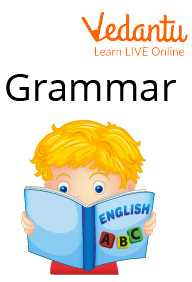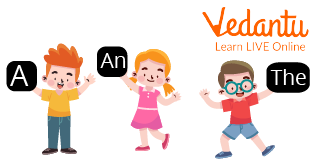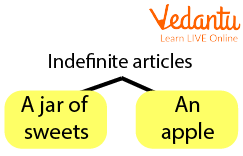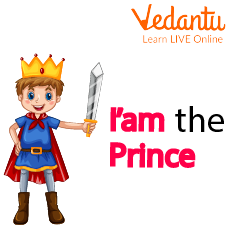Articles (A, An, The) Explained for Class 1 English Grammar [2025-26]
FAQs on Articles (A, An, The) Explained for Class 1 English Grammar [2025-26]
1. What are articles, and which words are considered articles in English for Class 1?
In English grammar, articles are small words that come before a noun to show if it is general or specific. The three articles you will learn in Class 1 are a, an, and the.
2. What is the most important rule for using 'a' versus 'an' in a sentence?
The main rule is based on the sound of the first letter of the word that follows.
- We use 'an' before words that start with a vowel sound (a, e, i, o, u). For example, an apple, an elephant.
- We use 'a' before words that start with a consonant sound (all other letters). For example, a ball, a cat.
3. When is it important to use the article 'the' for Class 1 students?
You should use the article 'the' when you are talking about a specific or unique person, place, or thing. For example, we say 'the Sun' because there is only one Sun. We also use it when talking about something that has already been mentioned, like, "I have a pet. The pet is a dog."
4. As per the CBSE Class 1 syllabus for 2025-26, provide one sentence example for each article: 'a', 'an', and 'the'.
Here are simple examples showing the correct use of articles:
- a: She has a new doll.
- an: I ate an orange for breakfast.
- the: The sky is blue today.
5. Fill in the blanks with an appropriate article (a, an, the) for these important questions: i) This is ___ ice cream. ii) Can you see ___ moon?
Here are the correct answers:
- i) This is an ice cream. (The word 'ice' starts with a vowel sound).
- ii) Can you see the moon? (The word 'moon' refers to a unique object).
6. Why is it important for a Class 1 student to learn about articles?
Learning articles is very important because it is a basic building block of English. It helps you make your sentences clear and correct. Using the right article tells the reader whether you are talking about any general thing (like 'a dog') or one specific thing (like 'the dog that lives next door'). Mastering this early makes writing much easier later on.
7. Why do we say 'an hour' even though the word 'hour' starts with the letter 'h', which is a consonant?
This is an excellent question that focuses on a key grammar rule. We use 'an' because the rule is about the sound, not the letter itself. In the word 'hour', the 'h' is silent, and the word starts with a vowel sound (like 'our'). That is why we say 'an hour'. The same applies to words like 'an honest boy'.
8. Is it correct to use articles like 'a' or 'the' before the names of people or countries?
Generally, no. We do not use articles before the names of most people, cities, or countries. For example, it is incorrect to say 'a Priya' or 'the India'. Names are already specific, so they do not need an article to identify them.



















